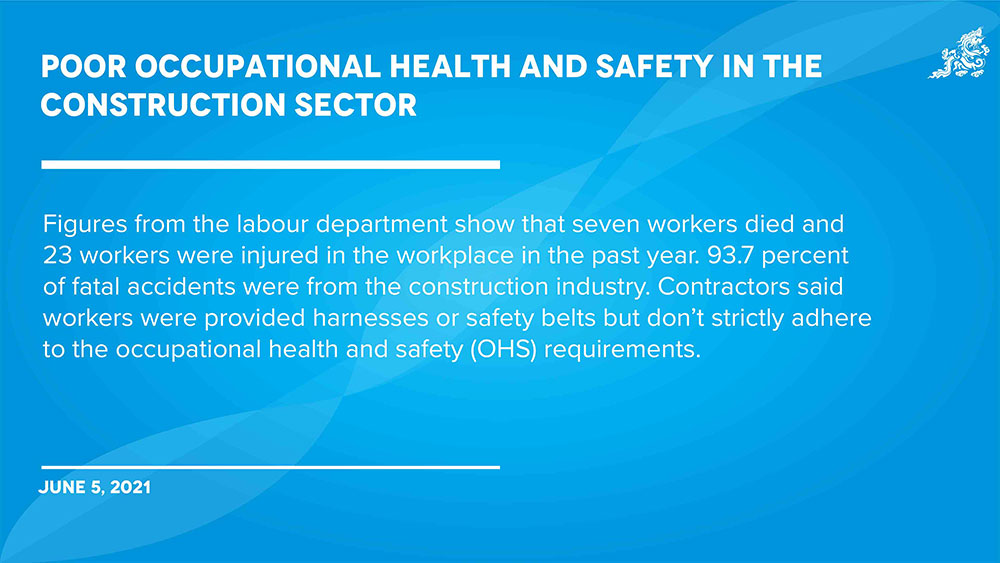Five workers were painting windows in a four-storey building in Thimphu. They did not have harness or safety gears such as helmets. Planks they stand on are placed on a bamboo scaffold.
A worker, Jigme, from Trashigang said it was scary to work from the height because he could lose his life if he falls. “Safety gears or harness are necessary, but it is also a question of working for survival.”
Figures from the labour department show that seven workers died and 23 workers were injured in the workplace in the past year.
It also revealed that 93.7 percent of fatal accidents were from the construction industry where as workplace accidents were more in the manufacturing sector at 60 percent and 36.7 percent in the construction industry.
Major causes of accidents were contact with or by moving machinery, burns from heat produced by explosion, flame, radiation and direct contact with hot surfaces and struck by moving, flying or falling object.
A worker said the safety gloves and boots were helpful because it protects them from the skin burning from the concrete while working in construction. “The contractor provided us with gloves and booths, but we have not received helmets yet,” he said.
The Labour and Employment Act of Bhutan 2007 states that employers should bear the cost of occupational health and safety such as facilities, protective clothing and equipment, machinery, systems and arrangements.
The Regulation on Occupational Health, Safety and Welfare states that every employer shall ensure the health and safety of all employees and any other person present at a workplace.
A contractor in Thimphu, Bhir, said workers were provided harness or safety belts whenever necessary.
He said that they do not strictly adhere to the occupational health and safety (OHS) requirements “Workers are reluctant to use it.”
He said workers should be encouraged from the beginning to wear protective clothing and equipment.
An engineer, Bishal Gurung, 25, said that some workers were reluctant to wear a helmet.
He said foreign workers do not fear the height, adding that workers mention their experience constructing 10-storey buildings.
In many private construction sites in Thimphu, helmets lie idle on the ground around the construction sites. Workers wear slippers or trainers.
Officials from the labour department said that they provide training to employers or employees on fire safety and first aid from various sectors.
The first aid training is conducted in collaboration with the health ministry. A total of 326 workers were trained on OHS and 483 on industrial first aid.
Officials said that some of the accidents in the workplace are not reported to the ministry. “The employers give them some money as compensation and ask them not to report. If we know about the accident, then we conduct a special investigation.”
They said that reporting to the ministry about the accidents prevents repetition of the same accident in the future. “The department conducts a risk assessment and monitors if the employee received aftercare services and compensation as per the law or not,” an official said.
Labour officials say most employers are reluctant to invest in OHS facilities. “There are also other challenges like lack of competent and trained professionals to conduct inspections on OHS and provide technical support for implementation and enforcement of OHS standards.”
By Chhimi Dema
Edited by Tashi Dema


